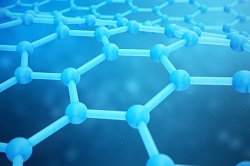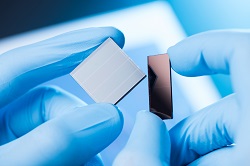New synthetic biology approaches enhance solar energy collection by bacteria
Plants, algae and bacteria capture light energy from the Sun and transform it into chemical energy through photosynthesis. These phototrophs harvest sunlight thanks to millions of photosynthetic pigments – like chlorophyll and bacteriochlorophyll – contained in each photosynthetic cell. To be able to absorb light energy and pass it on to the energy-requiring reactions of photosynthesis, these pigments need to be attached to the backbones of specialised proteins. The EU-funded SYNTHPHOTO project shed further insight into this poorly understood binding mechanism. “We want to figure out how pigment-protein complexes are made and how they start a process that eventually results in the production of adenosine triphosphate – a complex organic chemical that powers the thousands of chemical reactions that enable the cells to grow and divide. These light-harvesting complexes not only provide energy for life, they also hold the secret of designing devices that could one day provide truly clean, unlimited energy from sunlight,” notes Prof. Neil Hunter, coordinator of SYNTHPHOTO. Investigating chlorophyll biosynthesis Researchers in the Hunter laboratory have cloned and sequenced many of the genes for the chlorophyll biosynthetic pathway from Rhodobacter sphaeroides – a purple photosynthetic bacterium bacterium – and from the cyanobacterium Synechocystis. They successfully produced many of them in an active form in Escherichia coli. With focus on the enzymology of this pathway, the team uncovered the enzyme reactions that underpin the first and third steps of chlorophyll biosynthesis as well as the actual identity of the enzyme that bestows the green colour to the plants, so dominant on Earth it is visible even from outer space. Importantly, this is the first time that researchers successfully reconstituted the chlorophyll biosynthesis pathway in a non-photosynthetic organism. “We have successfully assembled genetic modules in Escherichia coli that produce the full chlorophyll pathway. Our results delineate a minimum set of enzymes required to make chlorophyll and establish a platform for engineering photosynthesis in heterotrophic model organisms,” notes Prof. Hunter. Uncovering the structure of light-harvesting complexes Thanks to the use of atomic force microscopy, crystallography techniques and electron microscopy data, researchers constructed for the first time atomic-level models of the whole photosynthetic membrane assemblies of Rhodobacter sphaeroides. The models successfully predicted the doubling time of the bacterium – a remarkable result. Another important achievement has been the determination of a photosynthetic protein structure that harvests and traps infrared light and converts it into an electrical charge. The pioneering research was performed on a photosynthetic complex from the bacterium Blastochloris viridis, which can harvest and use light at wavelengths over 1 000 nm, the red limit for photosynthesis on Earth. Hybrid structures for enhanced light-harvesting Using synthetic biology methods, researchers created the first hybrid photosynthetic complex in bacteria, which increases the efficiency of harnessing sunlight compared to natural photosynthesis. The team also reported new surface chemistries and nanopatterning methods to facilitate the construction of innovative architectures for coupled energy transfer and trapping. In particular, they fabricated nanometre-scale patterns of photosynthetic complexes on self-assembled monolayers deposited on gold and silicon by using several lithographic methods. “Such artificial light-harvesting arrays will advance understanding of natural energy-converting systems, and could guide the design and production of proof-of-principle devices that can efficiently capture, convert and store solar energy,” concludes Prof. Hunter. In the future there could be numerous applications in the energy industry.
Keywords
SYNTHPHOTO, photosynthesis, bacteria, pigment, synthetic biology, solar energy, light-harvesting complex, chlorophyll biosynthesis







